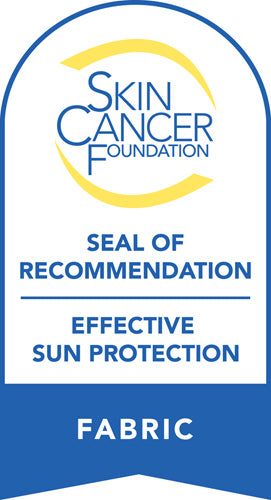Post-sunburn Care: Ways You Can Prevent Skin Cancer Effectively
In the US, more than 9,500 people each day are diagnosed with skin cancer according to the Skin Cancer Foundation, it's crucial to be proactive about protecting your skin from the sun's ultraviolet (UV) rays.
Recognizing the early signs is crucial for protecting your skin and overall health. By understanding what to look for, you can take proactive steps to prevent further harm.
Wondering how to prevent skin cancer after a bad sunburn? Let's explore the key indicators of skin damage so you can avoid potential health complications.
Why Protecting Your Skin After a Sunburn Matters
Taking care of your skin after a sunburn is more than just addressing immediate discomfort. The damage caused by overexposure to the sun can lead to long-term issues, including an increased risk of skin cancer.
Healing your skin properly reduces the likelihood of further harm and supports its natural recovery process. Sunburned skin is especially vulnerable, making it crucial to adopt effective care strategies. Addressing the effects of a burn promptly also minimizes lasting damage and promotes healthier skin overall.
How UV Protective Clothing Shields Your Skin
Wearing UV-protective clothing is one of the most effective methods for skincare prevention. These garments provide a physical barrier that prevents ultraviolet light from penetrating your skin. Unlike other forms of protection, UV clothing offers consistent coverage without the need for frequent reapplication.
It also reduces the risk of additional burns, which are common when spending time outdoors. By investing in high-quality clothing, you can prioritize your skin's safety and embrace a proactive approach to sunburn skin care.
The Importance of Regular Skin Checks
Frequent skin checks play a vital role in catching potential issues early. Examining your skin for unusual moles or changes helps identify problems before they progress. Post-sunburn periods are particularly important for monitoring as damaged skin may exhibit signs of trouble.
Regular checks create an opportunity to take swift action if abnormalities appear. Staying aware of your skin's condition empowers you to address potential skin cancer causes before they develop further.
The Role of Hydration in Skin Recovery
Hydrating your body supports the healing process after a sunburn. Drinking plenty of water helps replenish moisture lost during UV exposure, aiding your skin's recovery. Proper hydration also reduces redness and swelling, which are common after sunburns.
Focusing on hydration can improve your skin's elasticity and overall health. Water alone won't heal the burn, but it complements other post-sunburn remedies by promoting internal balance.
Avoiding Further Sun Exposure Post-Burn
Minimizing time in direct sunlight is critical after experiencing a sunburn. Seeking shade or staying indoors during peak hours reduces the risk of further damage.
When going outside, wearing UV protective clothing is essential for added safety. Creating habits like planning outdoor activities during less intense periods of the day can significantly lower UV exposure risks. Consistently protecting your skin helps it recover while preventing additional harm.
The Connection Between Sunburn and Skin Cancer Risks
Sunburn significantly increases the likelihood of developing skin cancer over time. The damage caused by UV rays alters skin cells, making them more prone to harmful changes. Multiple sunburns, especially during childhood, compound this risk as they accumulate over the years.
Educating yourself about UV exposure risks allows you to take informed steps to protect your skin. By understanding these connections, you can adopt practices that prioritize long-term health and safety.
Preventing Long-Term Damage to Your Skin
Healing properly after a sunburn helps reduce the chances of lasting damage. Prolonged exposure to UV rays weakens the skin's structure, leading to premature aging and increased cancer risks.Protecting your skin during recovery ensures it rebuilds its defenses effectively.
Steps like wearing UV clothing and limiting time outdoors aid in prevention efforts. A proactive mindset promotes healthier skin for years to come.
Steps to Soothe a Sunburn
Finding effective ways to ease discomfort after a burn is important for recovery. Cool compresses can reduce swelling and redness without causing further irritation.
Covering the affected areas with lightweight UV clothing keeps your skin shielded during healing.Staying hydrated also complements these efforts, offering relief from the inside out. Thoughtful approaches to sunburn skin care not only soothe but also prevent additional harm.
Creating Safe Outdoor Habits After a Sunburn
Adopting safer habits ensures better skin protection options in the future. Planning outdoor time during early morning or late afternoon hours minimizes direct UV exposure. Seeking shaded areas helps you enjoy being outside without compromising your skin's health.
Pairing these practices with protective clothing reduces risks associated with sunburns. Over time, building these habits fosters a safer and healthier approach to outdoor activities.
Building Awareness of Sun-Safe Practices
Sharing knowledge about sun safety encourages better habits for yourself and others. Educating friends and family on effective protection methods makes a positive impact. Raising awareness about the dangers of UV exposure helps build stronger community practices.
Demonstrating the use of UV protective clothing inspires those around you to prioritize their health. The more we learn and share, the safer our outdoor experiences can be.
How to Monitor Changes in Your Skin Over Time
Paying attention to your skin's appearance helps catch problems early. Changes such as new moles or discoloration can signal potential issues worth investigating. Creating a routine for self-checks builds a habit of staying proactive.
Observing how your skin heals after sunburns offers insight into its overall condition. Tracking these details over time allows you to address concerns before they escalate.
Maintaining Skin Health Through Preventive Measures
Healthy skin starts with consistent protective measures. Limiting UV exposure (especially after sunburns) promotes long-term skin health.
Incorporating UV protective clothing into your routine adds an extra layer of defense. Making small but impactful changes to daily habits helps support your skin's resilience. By staying committed to skin cancer prevention, you significantly lower the risks associated with prolonged sun damage.
Encouraging Family and Friends to Prioritize Skin Safety
Talking with loved ones about skin safety helps create a supportive environment. Sharing tips about effective post-sunburn remedies can lead to healthier habits for everyone.
Encouraging the use of UV protective clothing demonstrates a commitment to mutual well-being. Discussing the risks of excessive sun exposure fosters awareness that benefits the entire group. Through open communication, prioritizing skin safety becomes a shared goal.
Choosing the Right UV Protective Clothing
To get the right outcome from the product you choose, it's imperative to understand how to find the right UV clothing. Otherwise, you risk damaging your skin. Listed below are key aspects to look for.
Understanding UPF Ratings
Ultraviolet protection factor (UPF) ratings indicate how well clothing blocks ultraviolet rays. A higher UPF number means greater protection for your skin. Opting for garments with a UPF of 50 or more is ideal for an extended time in the sun.
Learning about UPF helps you make informed choices when selecting protective wear. Always check the label to confirm the clothing's effectiveness against harmful rays.
Opting for Full Coverage
Clothing that covers more skin offers better protection from UV rays. Excellent choices include:
- Long-sleeve shirts
- Wide-brimmed hats
- Full-length pants
Choosing garments with a snug but comfortable fit ensures consistent protection without gaps. Lightweight fabrics can keep you cool while still covering your arms and legs. Prioritizing coverage helps minimize the risk of sun damage during outdoor activities.
Choosing Comfortable Fabrics
Fabric comfort plays a key role in encouraging the regular use of UV clothing. Materials like lightweight cotton blends or synthetic fibers can balance protection and breathability. Softer fabrics prevent irritation, especially during long periods of wear.
Stretchable options provide better movement without compromising coverage. Selecting comfortable fabrics ensures you'll stick to wearing them regularly.
Picking Activity-Specific Clothing
Activities like hiking and swimming require clothing tailored to your needs. Some garments are designed for water resistance or extra durability for rugged use. Lightweight options are ideal for high-energy sports, while breathable materials suit lower-intensity activities.
Finding the right balance between protection and functionality makes outdoor tasks more enjoyable. Adapting your choices to your lifestyle helps maximize the benefits of UV wear.
Ensuring Durability
Durable clothing provides reliable protection over time without frequent replacements. High-quality stitching and materials resist wear and tear from outdoor use. Checking for fade resistance ensures the fabric maintains its UPF rating even after washing.
Strong fabrics hold up well against repeated exposure to the elements. Investing in durable UV clothing saves money and effort in the long run.
Recognizing the Early Signs of Skin Damage
There's no shortage of symptoms that your skin's been damaged by the sun. The sooner you recognize them, the faster you can seek necessary medical attention. Below, we'll explore the key signs to watch out for.
Redness as a Warning Sign
Sunburn often begins with redness that spreads across the affected area. Skin may feel warm to the touch, which indicates inflammation caused by UV damage.
The redness can deepen over time, especially if the exposure is prolonged. It's important to monitor whether the redness fades or worsens, as persistent redness may signal more severe damage. Early attention to these signs can help prevent long-term complications.
Peeling or Flaky Skin
Skin that starts to peel or flake after sun exposure is a sign of damage. Peeling occurs as the body sheds dead and damaged cells to promote healing.
While it's a natural process, excessive peeling can leave the skin more vulnerable to infections. Avoid picking at peeling areas, as it may delay recovery or cause scarring. Keeping the skin clean and covered can help protect it during this stage.
Persistent Dryness and Irritation
Prolonged dryness after a sunburn suggests deeper skin damage. Irritation often accompanies dryness, making the skin feel tight and uncomfortable. Cracks or rough patches may appear if the dryness persists without proper care.
Drinking water and wearing protective clothing can support the healing process. Paying attention to these symptoms allows for quicker intervention and better recovery outcomes.
Dark Spots or Discoloration
Discoloration on the skin, such as dark spots, often develops after repeated sun exposure. These spots are a result of excess melanin production triggered by UV damage. Changes in pigmentation may not always appear immediately, making regular skin checks essential.
Spots that grow or darken over time should be examined by a dermatologist. Recognizing these changes early can help address potential issues before they worsen.
New or Changing Moles
The appearance of new moles or changes in existing ones can signal serious skin issues. It's critical to monitor moles for:
- Irregular shapes
- Uneven colors
- Sudden growth
Skin damaged by UV rays is more prone to developing abnormalities like melanoma. Early detection of unusual moles can lead to timely medical intervention. Keeping track of mole changes ensures a proactive approach to skin health.
Itching or Burning Sensations
Itching or a burning feeling on your skin can be an early sign of sun damage. These sensations often indicate irritation caused by prolonged exposure to UV rays.
The affected area may become more sensitive to touch, making it uncomfortable to wear certain fabrics. Persistent burning sensations could point to deeper damage beneath the skin's surface. Paying attention to these symptoms helps identify issues before they escalate into more serious problems.
Unusual Bumps or Blisters
Bumps or blisters on the skin after sun exposure often indicate significant damage. These can develop when the skin's outer layer has been compromised by UV rays.
Blisters filled with fluid are the body's way of protecting and repairing the injured area. Popping or scratching them can lead to infections, slowing down the healing process. Observing how these bumps progress is essential to determine if medical attention is needed.
Understand How to Prevent Skin Cancer After a Bad Sunburn
Recognizing and addressing early signs of skin damage can make a significant difference in your skin's health. The tips in our guide will help ensure you know how to prevent skin cancer after a bad sunburn.
BloqUV offers UPF 50+ sun-protective activewear that blocks 98% of the sun's harmful rays, providing instant protection for outdoor enthusiasts. Designed for both men and women, our apparel combines functionality with style. You can check out our catalog today to learn more about how we can help.



